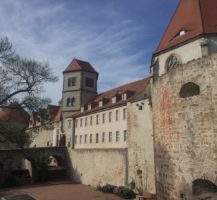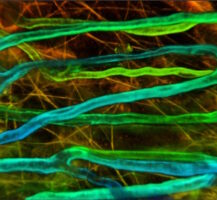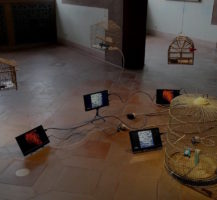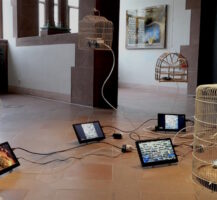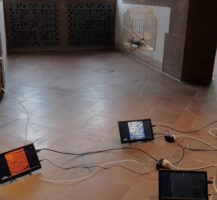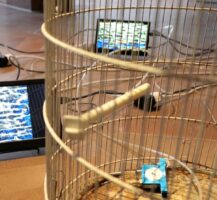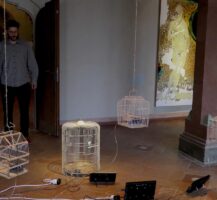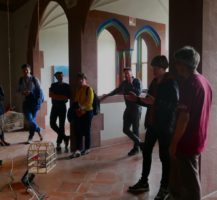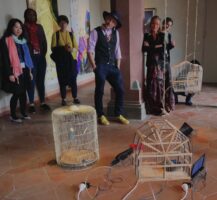Video of Arrhythmia
Arrhythmia (2019, in collaboration with Sergey Kostyrko) premiered at the exhibition
“Finding Affinities”, Kunstmuseum Moritzburg, Halle (Saale), Germany, April 27 –May 4, 2019, organised by the Global Young Academy.
In this project we transform video images into sound. These images were created by Dr. Danyla Bobkov and his colleagues from the Institute of Cytology, located in St. Petersburg. In their scientific experiments they used laser scanning confocal microscopy to investigate the behaviour of live isolated rat hearts. The main focus of their research was on the arrhythmic behaviour of these hearts, how it arises and how it’s possible to avoid it. It was shown that some of the cells one by one start beating with frequencies different from the original rhythm due to chemical factors. The noise from these cells may grow, and finally affect the fundamental frequency causing an irregular heartbeat. It’s a well-known phenomenon that the reduction of a cell is related to the calcium level in it. Using a special dye that reacts with calcium, it is possible to observe the beating even of only one cell.
Our main interest lies in converting the behaviour of a biological system into sound patterns. We estimate the motion of the cells, using a Phase Correlation method that enables us to measure the relative displacement between frames of the provided microscopy videos. The changes in movement direction are being transformed in real time into energy (air) delivered to a vibrator. To increase the artistic result, we apply an algorithmic approach to manage the video footage. We reorganise the film material randomly into collage movies. Each vibrator is coupled individually to a specific “video channel”. The different temporal behaviours of these videos result in unique polyrhythmic structures produced by the vibrators. Each video channel is being created in real time and projected on its own screen.
At the premiere, May 2019, in the Kunstmuseum Moritzburg, Halle, Germany, we had four video channels that controlled the behaviour of four vibrators. These vibrators, of a rather prosaic, industrial design, are placed in a vivid, poetical variety of cages, that originally house living animals; A normally lifeless, mechanical object becomes a kind of relic of what once was a living creature, like the isolated rat hearts in the laboratory setting, creating an audio-visual metaphor of a biomechanical machine.
We keep on collecting animal cages, thinking of bigger versions in the future. The small screens we used in Halle may be replaced by much bigger individual projections, depending of context and the properties of a space.
Special thanks to Danyla Bobkov for providing the scientific video footage, to ArtSci Nexus for bringing us together and to the Global Young Academy who made this first version possible by producing the exhibition “Finding Affinities” as part of the 10th annual meeting in Halle.
More about the exhibition at:
https://agm.globalyoungacademy.net/exhibition/art-exhibit-programme/




